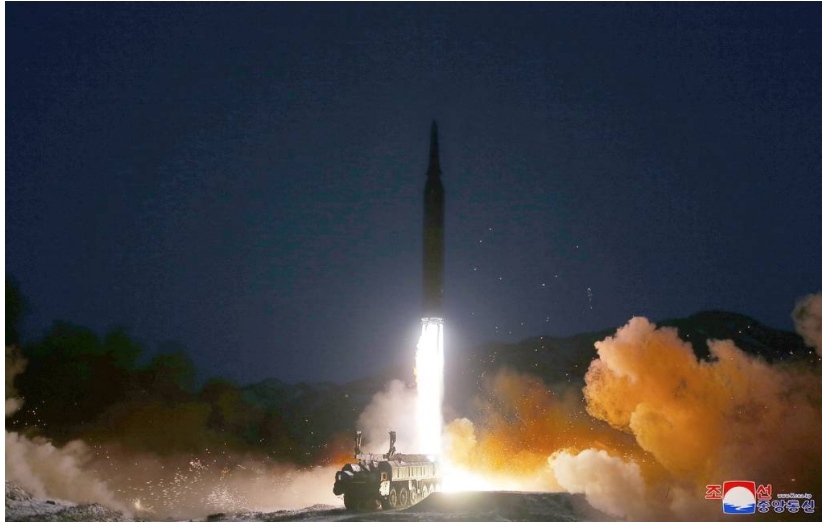North Korea’s claims it has tested hypersonic weapon

Earlier, the Korean Central News Agency said that the country on January 11 successfully tested a hypersonic missile, with the country’s leader Kim Jong-un watching the launch. The missile flew 1,000 kilometers to hit the designated target.
The KCNA report stressed that the purpose of the test was to verify the parameters of the newly-developed hypersonic weapon system. The Japanese and South Korean military said that Pyongyang’s missile had splashed outside Japan’s exclusive economic zone in the Sea of Japan.
North Korea’s claims it has tested a hypersonic weapon, and not some item flying at hypersonic speeds, bear a heavy political imprint. North Korea’s statements were made against a background of rivalry among several large countries for the right to be called hypersonic powers.
The front-runner in the hypersonic race is Russia, with USA, India and China closely vying for holding second place. There have been objective confirmations that such tests are going well. China has declared it has successfully tested at least two hypersonic vehicles.
As for the United States, the situation is a little bit more complex there. The official presentation of a hypersonic vehicle has been postponed for the time being. Whereas India has successfully tested its Shaurya fully cannistarized hypersonic missile which has a speed of over Mach7. The BRAHMOS 2 cruise missile with a range of 800km will also be a hypersonic missile and should be entering Indian Navy for deployment by 2025.
However many believe that North Korea’s statements are not very close to reality. The current test by North Korea is only an effort to demonstrate its missile technologies. Using ballistic missiles, they do accelerate some items to speeds above Mach 5, but these products are not exactly what the nuclear powers having advanced military-industrial complexes call hypersonic weapons.
The term hypersonic weapon Should not be used in relation to any object flying faster than Mach 5, but only those that can be guided and perform maneuvers and penetrate anti-missile and anti-aircraft defenses.
North Korea’s reported testing of a hypersonic missile followed December’s joint statement by China, Russia, Britain, the United States and France on the impermissibility of nuclear war.
In this context North Korea has tested a ballistic missile that flew over Japan and splashed down outside the country’s economic zone. In this way North Korea drew attention to the fact that it possesses rather impressive missile technologies. Though North Korea was keen to join the club of countries armed with hypersonic weapons.
Whether they achieve hypersonic speeds or not is a rhetorical question. Very possibly, more accurate data will emerge in due time, because all launches are monitored. Experts believe that North Korea’s testing of a missile carrying a hypersonic warhead indicates that the country has been successful in its efforts to develop strategic weapons.
Pyongyang has demonstrated quite a few variants of ballistic missiles. On the Internet one can find images from an exhibition in North Korea where a missile with a hypersonic warhead was on display. However because of the range of North Korean missiles, these tests pose threats to Japan and South Korea rather than to Russia or other missile powers.
Though launch of missiles towards Japan poses threat also to the numerous US bases in Japan and South Korea – one of the likely hypothetical targets for the North Korean missiles.
On January 3, the leaders of five nuclear powers and permanent members of the UN Security Council, said in a joint statement they regarded it as their top priority to prevent war between nuclear powers and to ease strategic risks. They voiced the certainty that a nuclear war could not be won and must never be started.
Since these five members have deliberately kept India a sovereign Nuclear and Missile power out of this declaration, the entire effort has turned out to be rather meaningless and just a show of arrogance.
These five opposing the further proliferation of nuclear weapons looks a clear selfish move and thus non acceptable by countries like Iran, Turkey, Pakistan, North Korea and few others.
In fact the standing Indian declaration of giving up entire nuclear weapons by each and every power should be the actual goal. For this all 5 permanent members of UNSC first reduce their nuclear arsenal to an agreed minimum and thereafter move towards ZERO.




